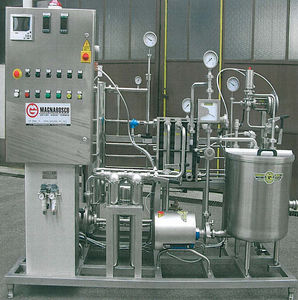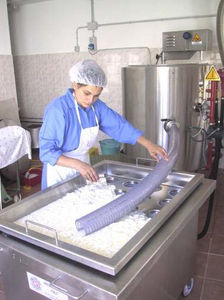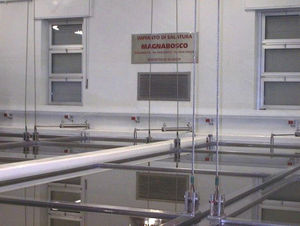
- Food industry
- Dairy processing
- Cheese tank
- Magnabosco
Cheese tank






Add to favorites
Compare this product
Description
In the room where Grana Padano is processed (pict. 1 and 2), there are n.72 bell-shaped copper boilers,
isothermal model, capacity 11 hectolitres.
2) The raw milk arrives at the dairy with tank trucks, and some self-priming pumps transfer it to the 2 automatic
separators capacity 40 hectolitres each (pict. 3 and 4), where the natural cream separation and the fat quantity in the
milk standardizing are performed; these phases are automatic.
3) After standardizing, the milk desired quantity is automatically transferred into the boilers (pict.5).
4) After the automatic milk load into the boilers, milk heating starts to reach automatically the required temperature for
production (pict. 6 and 7).
5) Once the needed temperature is reached, the siero innesto and rennet are added, keeping always milk stirred to
distribute them uniformly (pict.8).
6) After coagulation curd is cut (pict.9 and 10);
7) After cutting the curd is automatically cooked, by heating it until the required temperature (pict. 11 and 12).
8) After cooking the curd is kept maturing, during this phase the curd grains aggregate and go down on the boiler
bottom
Catalogs
No catalogs are available for this product.
See all of Magnabosco‘s catalogsRelated Searches
*Prices are pre-tax. They exclude delivery charges and customs duties and do not include additional charges for installation or activation options. Prices are indicative only and may vary by country, with changes to the cost of raw materials and exchange rates.







